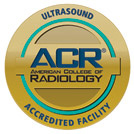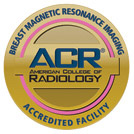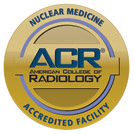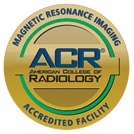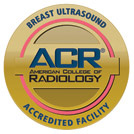Radiofrequency ablation (RFA) or microwave ablation (MVA) technology is used to guide a needle through the skin into a kidney tumor. In general, RFA uses high-frequency electrical currents emitted by an electrode in the needle to create a small, cancer cell-destroying beam of heat. MWA has a similar purpose and pathway, only microwaves are used.
What is RFA and MWA Ablation?
A doctor may recommend RFA or MWA for patients unable to have cancer-related surgery or who are living with one kidney.
These minimally invasive procedures use ultrasound, computed tomography (CT) or magnetic resonance imaging (MRI) to guide the needle into the cancerous tumor. To destroy the cancer cells, the electrical currents or microwaves emitted from the needle go through an electrode to ground pads on the body. In this spot, the needle creates a highly concentrated area where the heat is applied.
Both RFA and MWA offer a secondary benefit: These ablation technologies close the small blood vessels to reduce the patient’s risk of bleeding. After the procedure, scar tissue replaces the dead cancer cells and diminishes over time.
Doctors may use the procedures to treat multiple tumors at once. If the cancer reappears, RFA and MWA may be requested again. These procedures are done in an outpatient setting or with an overnight stay, if the patient receives general anesthesia.
For RFA, a radiologist may use a straight, solid needle or a straight, hollow needle containing multiple extendable electrodes. During the procedure, a radiofrequency generator creates the current in the radiofrequency wave range. For MWA, the radiologist will only use a straight needle. A generator also connects to the needle and is used to create electromagnetic waves in the microwave energy spectrum.
Both procedures may employ a CT scanner to guide the needle. This round-shaped machine features a tunnel through its center and the patient lies down on a table that passes through the middle. For imaging, a gantry supporting both an X-ray tube and X-ray detectors passes around the patient. In a separate room, the radiologist observes all images taken on a computer monitor.
Benefits of RFA and MVA include:
- Both procedures are relatively quick to perform and recover. In turn, patients currently undergoing chemotherapy treatment may resume sessions shortly after.
- No incisions, so the kidney is structurally preserved and patient’s renal function is unaffected.
- Compared to similar treatments, both procedures are relatively affordable.
- The procedures won’t elevate the patient’s blood pressure.
Who Should Have This Procedure?
For patients living with cancerous kidney tumors, RFA and MWA may be recommended if the tumor is small in size or the patient:
- Lives with other conditions that preclude surgery.
- Has only one kidney.
- May have difficulties with post-surgical recovery – a greater risk for older patients.
- Is genetically disposed to kidneys on both tumors, currently has nodules on both organs or a recurrent tumor after surgical resection.
Preparation
Inform the technologist if you think you may be pregnant, as imaging may expose the fetus to low levels of radiation. Patients also need to disclose any recent illnesses, medical conditions, medications and allergies, including to contrast materials, general and local anesthesia.
Prior to the procedure, it may be requested you:
- Stop taking aspirin, nonsteroidal anti-inflammatory drugs (NSAIDs) and blood thinners several days before.
- Not eat or drink anything after midnight on the day of your procedure.
- Find someone to drive you home afterward.
- Have your blood tested to evaluate kidney function and blood clotting.
RFA and MWA are done in an outpatient setting, yet the procedure may be held in an operating room or interventional radiology suite. As the procedure begins:
- You will be asked to remove all metal objects, including jewelry and hearing aids.
- The Radiology Nurse will monitor your heart rate, blood level and oxygen as the anesthesiologist administers sedation medication or general anesthesia.
- Due to tumor location, a urologist may place a temporary stent into the ureter. The stent drips cool water to reduce heat injury and is removed once the tumor has been destroyed.
- Before the needle is applied, a technologist sterilizes and covers it with a sterile drape. Local anesthetic is used to numb the area. At this point, a small incision is made in the area.
- The needle electrodes are inserted into the skin to the site of the tumor. Using imaging technology.
- Once everything is in place, energy is applied to the area. For larger tumors, multiple electrodes may be used.
- Once all applications are complete, the needle electrode is taken out and a dressing is applied to the affected area.
- Patients stay in the recovery room until they wake up and have the IV removed.
Following the procedure, patients can return to their daily activities within a couple days. Patients may be prescribed pain medication for any discomfort or nausea.
Post-procedure, a radiologist examines the scans to determine if all tissue was ablated or any complications occurred. Depending on what is found, follow-up visits may be requested by your doctor.
Is RFA or MWA for a cancerous tumor the right procedure for you? Contact us to make an appointment today!





